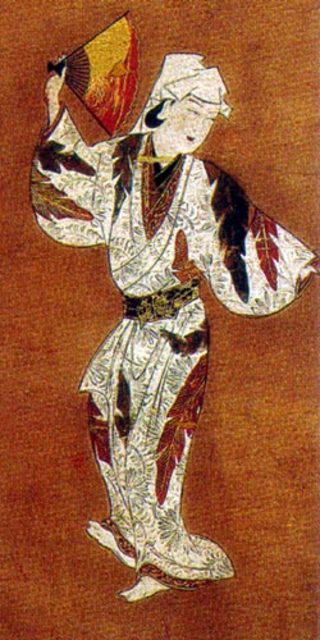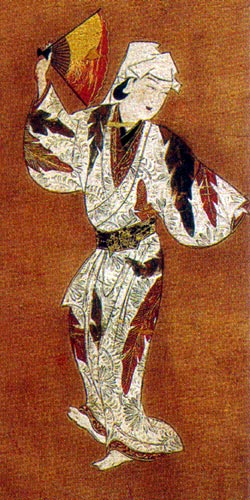"Portrait of Ukon Genzaemon" Edo period, 17th century

Full description
Artist unknown The eccentric and often sexual performances of onna (women’s) kabuki theater combined with sexual work behind the scenes made the shogunate call the kabuki theater a “national disturbance of morality". The shogunate first banned women from acting to stop the onna kabuki that was created by Okuni. That ban existed for over 200 years after that. That did not stop the kabuki theater or the prostitution. Now it has become Wakashu Kabuki and wakashu, young boys whose work was not much different from female prostitutes, who took over the roles of women in the theater. They brought new elements to kabuki in the form of juggling and acrobatics and even tight rope walking. For quite a long time, the wakashu kabuki was untouchable since the current shogun Iemitsu was a huge fan and supporter of the theater. But replacing women with Wakashu did not solve the problem of “national disturbance of morality” like prostitution and eccentric/very much “kabuki” in its very nature dances were still essential parts of the theater. And as soon as Iemitsu died, the new shogun prohibited the wakashu kabuki as well. In this picture we can see a Ukon Genzaemon. He used to be a wakashu and played in wakashu kabuki before it was banned. He is considered the first yaro (adult man) to use a kerchief to cover the shaved forehead. That kerchief became a distinctive characteristic of onnagata and made it possible for the kabuki theater to exist despite the bans. - Daria Gileva
Comments
to view and add comments.
Annotations
No one has annotated a text with this resource yet.
- typeImage
- created on
- file formatjpeg
- file size47 kB


